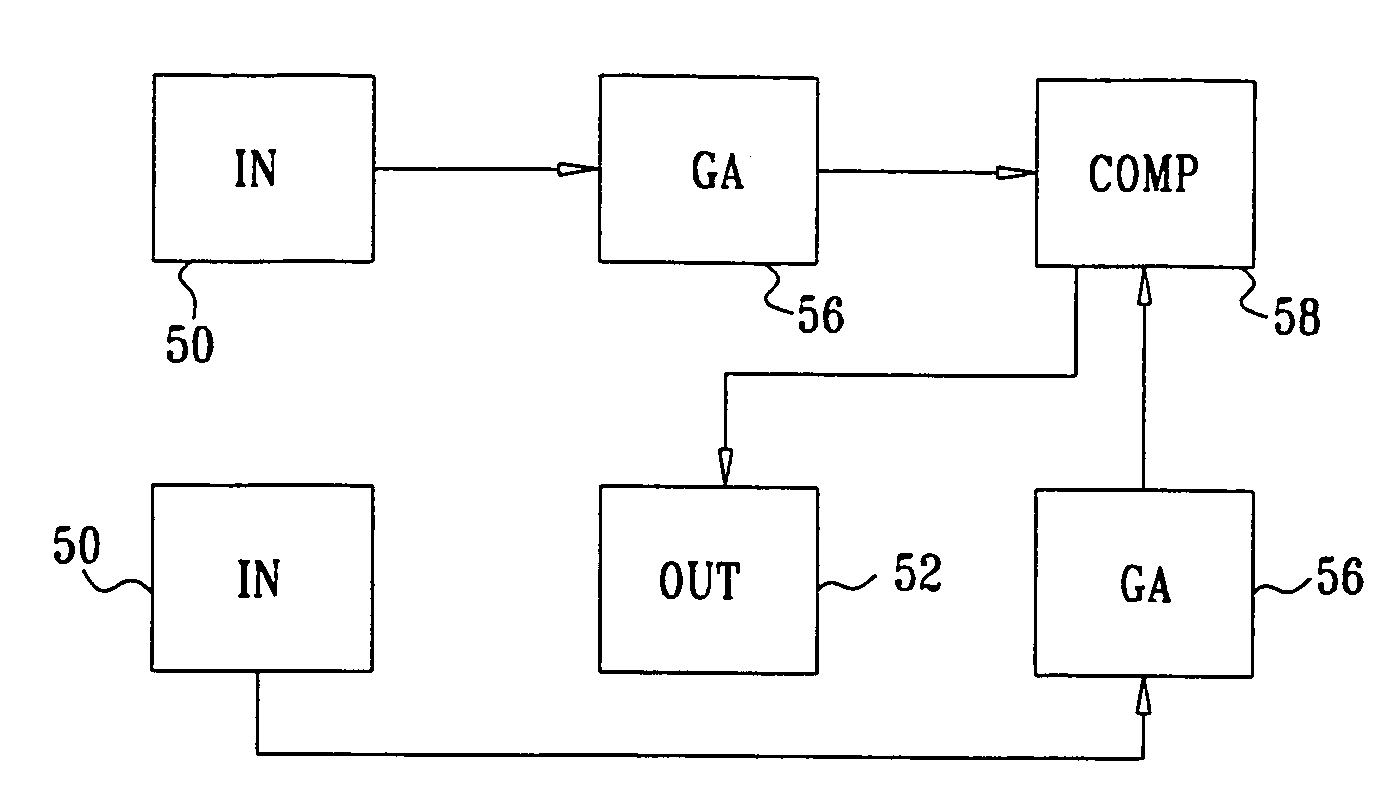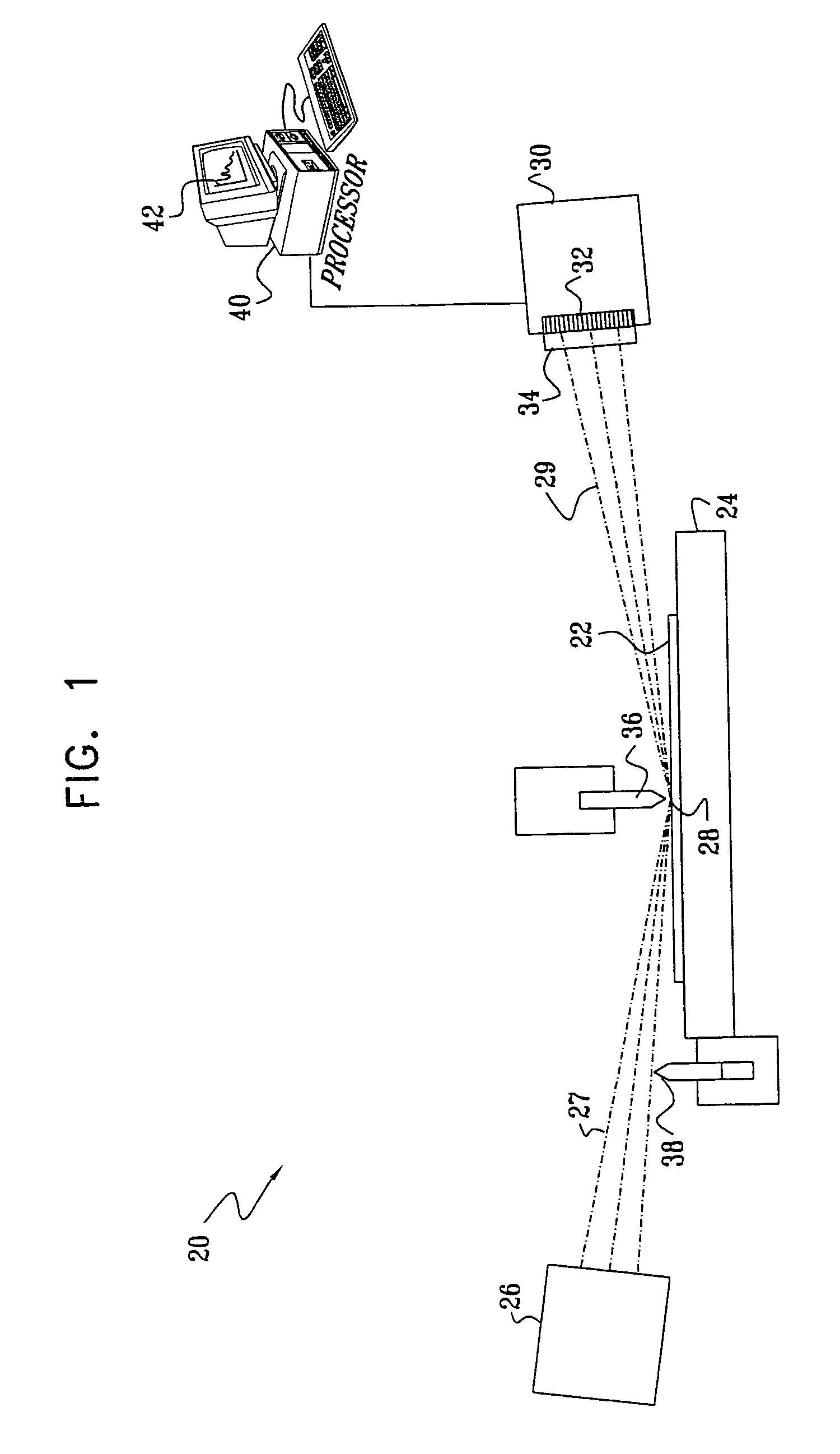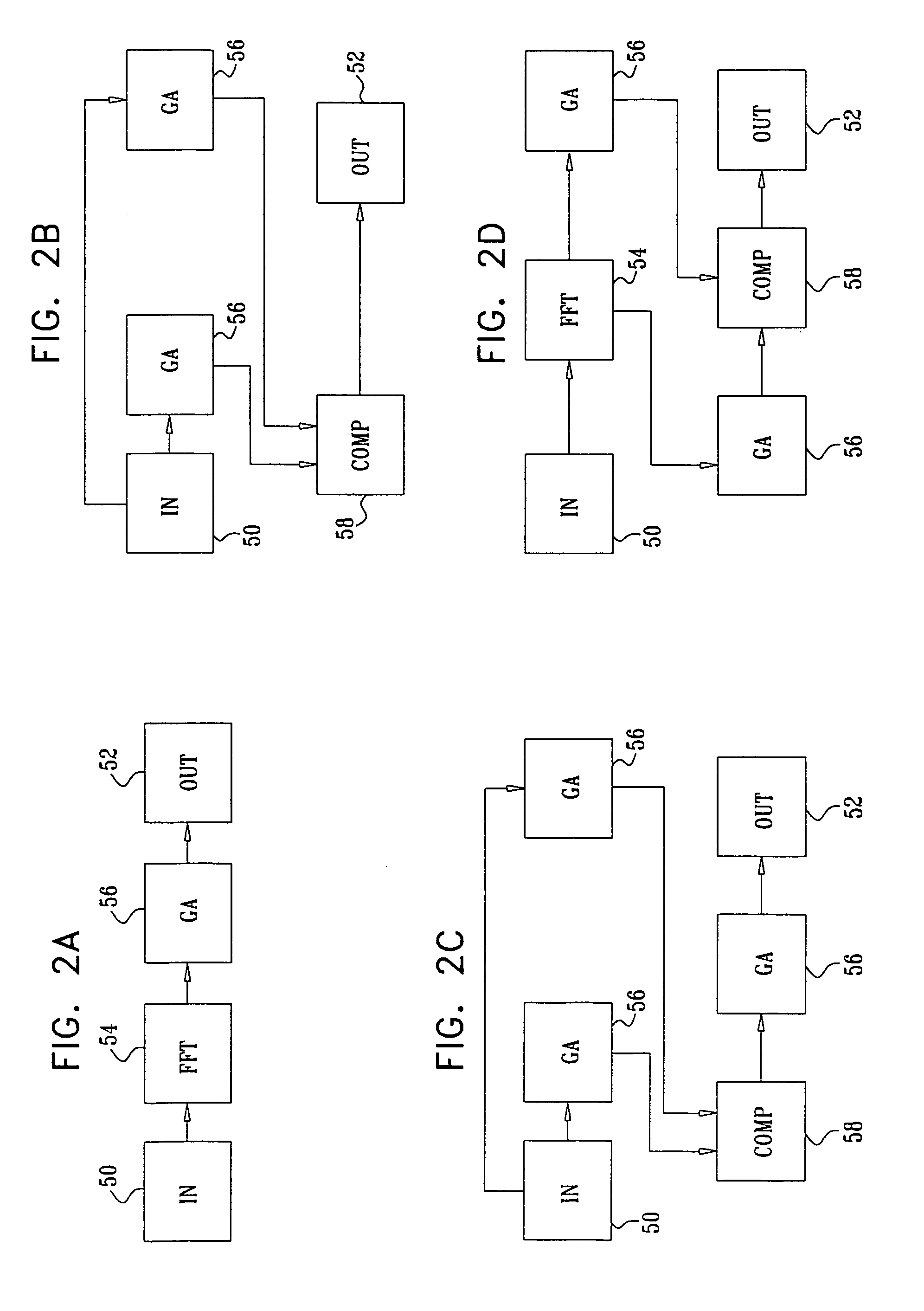Material analysis using multiple X-ray reflectometry models
a reflectometry and material analysis technology, applied in the field of x-ray reflectometry, can solve the problems of long calculation time of fitting methods, limited results, and high non-linearity of error functions, so as to reduce calculation time, reduce the need for human involvement and expertise, and the effect of fast, automated analysis
- Summary
- Abstract
- Description
- Claims
- Application Information
AI Technical Summary
Benefits of technology
Problems solved by technology
Method used
Image
Examples
Embodiment Construction
XRR System Description
[0083]FIG. 1 is a schematic illustration of a system 20 for X-ray reflectometry (XRR) of a sample 22, in accordance with an embodiment of the present invention. The sample is typically mounted on a motion stage 24, allowing accurate adjustment of its position and orientation. An X-ray source 26 irradiates a small area 28 on sample 22. A dynamic knife edge 36 and a shutter 38 may be used to limit an incident beam 27 of the X-rays, as described in the above-mentioned U.S. Pat. No. 6,512,814.
[0084]A reflected beam 29 of X-rays from sample 22 is collected by a detector assembly 30. Typically, assembly 30 collects reflected X-rays over a range of reflection angles between about 0° and 5°, both below and above the critical angle of the sample for total external reflection. Assembly 30 comprises a detector array 32, typically arranged in either a linear or a matrix (two-dimensional) array.
[0085]A reflectometry processor 40 analyzes the output of assembly 30, so as to ...
PUM
 Login to View More
Login to View More Abstract
Description
Claims
Application Information
 Login to View More
Login to View More - R&D
- Intellectual Property
- Life Sciences
- Materials
- Tech Scout
- Unparalleled Data Quality
- Higher Quality Content
- 60% Fewer Hallucinations
Browse by: Latest US Patents, China's latest patents, Technical Efficacy Thesaurus, Application Domain, Technology Topic, Popular Technical Reports.
© 2025 PatSnap. All rights reserved.Legal|Privacy policy|Modern Slavery Act Transparency Statement|Sitemap|About US| Contact US: help@patsnap.com



